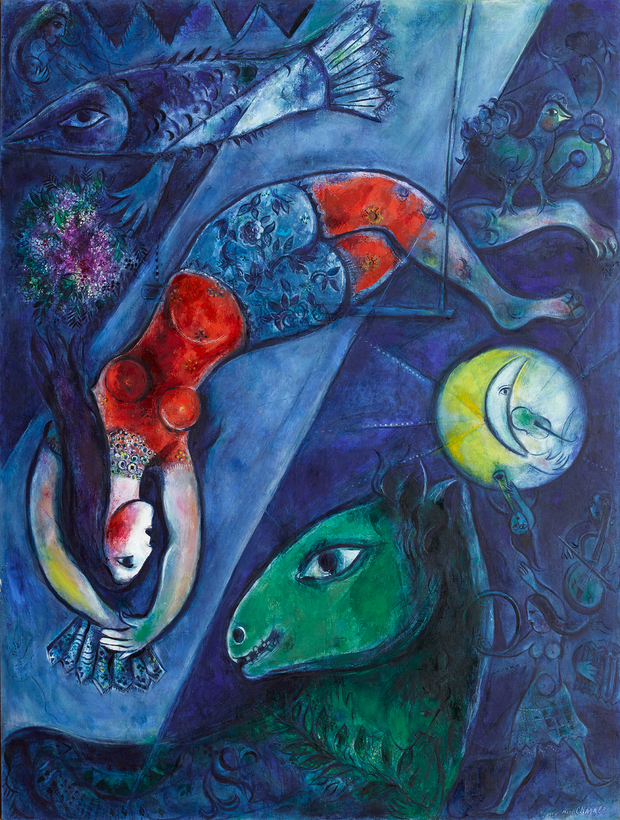Just how relevant is Marc Chagall? With a big retrospective on this ever popular, downright lovable painter now opening at the Albertina Museum, in Vienna, it’s a question worth asking. In the decades since Chagall’s 1930s ascension to the art-world firmament, his idiosyncratic imagery—big-eyed cows, green-faced fiddlers, flying newlyweds—has become, if not exactly cliché, a much-hugged baby blanket from the glory years of European modernism.

Well, somewhat unexpectedly, Chagall suddenly looks like a deeply important figure for the current moment. An artist whose Jewishness was central to his work, Chagall is a bulwark of identity in the current crisis of confidence engulfing the Jewish world. Hostility has come, very quickly, from the far right and far left across the U.S. and Europe, along with the outbreak of bloodletting in the Middle East.

Chagall has been in this position before. In the dark years after the end of W.W. II, when the annihilation of European Jewry—its sheer scale—was becoming ever more apparent, his work offered a crumb of comfort to devastated Jewish populations the world over, acting both as a memorial to and an affirmation of the shtetl culture he had left behind and which the Nazis destroyed.
The war, in some ways, was the making of Chagall. He was lucky enough to get to New York in 1941, a step ahead of the roundups in Vichy France, where he had decamped after the German invasion. (An invitation from the Museum of Modern Art helped smooth the passage.) But Chagall never really settled in America. In 1944, he was hit hard by the unexpected death of his wife Bella, the model for some of his most ecstatic paintings. The destruction of Vitebsk (now in Belarus), the hometown he so memorably conjured up in painting after painting, further undid him. And yet his art was making serious inroads into the collective consciousness. His penetration of mainstream culture would be complete in 1964, with the fantastic success of the Broadway musical Fiddler on the Roof, adapted from stories by Sholem Aleichem but given a Chagall-flavored title.

The Albertina’s exhibition takes in the full range of Chagall’s career, from his Cubism-adjacent early work, with its blocky forms and divided spaces, through the mythopoeic celebratory images of the interwar years, to the more lyrical and often mournful variations he produced in his final decades. Given Chagall’s prolific output, the show doesn’t aspire to anything remotely comprehensive, but it does present some key works: the melancholy Solitude, from 1933; the gentle Poet Reclining (painted on his honeymoon with Bella, in 1915); and the second, later version of the joyous Birthday (1923), in which Chagall himself is the light-as-a-feather young admirer.

But nothing, least of all Chagall, is ever that simple. The Albertina underscores the predilection of this most Jewish of artists for painting—of all things—crucifixions. Symbolizing Jewish persecution and martyrdom, such scenes crop up in at least seven of the works on show. Among them is one of Chagall’s most haunting images: the 1944 gouache The Crucified, on loan from Jerusalem’s Israel Museum. Here, in this requiem to lost Vitebsk, Jews are nailed to crosses that line a snowbound street, half-dressed corpses on the ground beneath them. The man on the roof does not fiddle—he holds a blood-red Torah scroll. This is not chicken soup for the soul but a jolting reminder of what mankind is capable of.
“Chagall” is on at the Albertina Museum, in Vienna, until February 9, 2025
Andrew Pulver writes about film for The Guardian and about art for The Art Newspaper. He lives in Oxford

